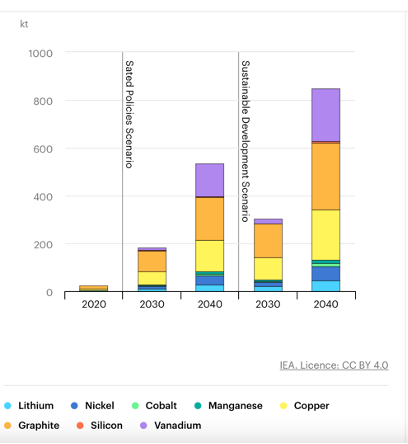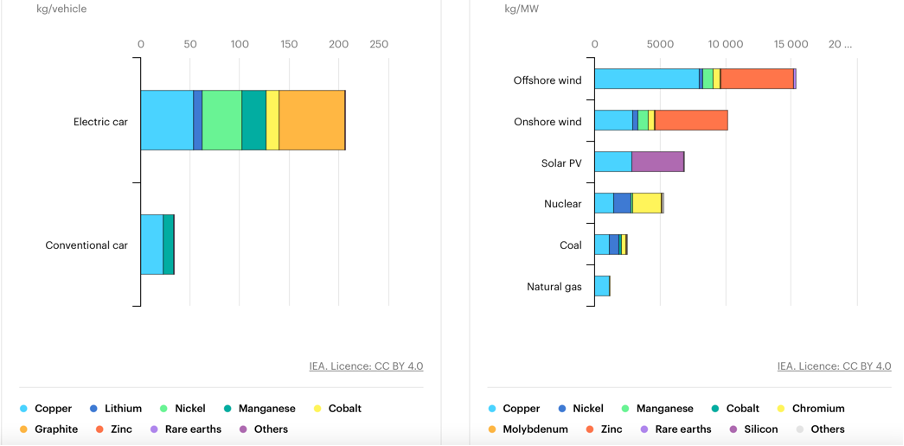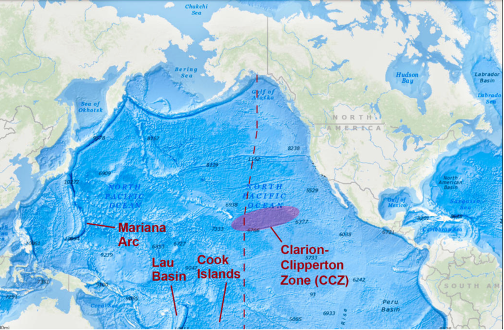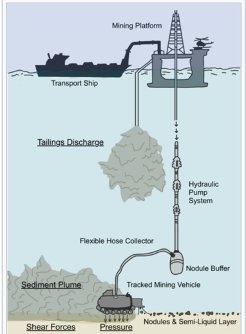10.7. Cars and Minerals#
Electric Cars provide a solution to decarbonise transport, once the electricity supply is renewable. In terms of the present situation, an electric car will travel about 4-5 miles per kWhr charge in the battery. This is equivalent to about 100-120 mpg (miles per gallon). If the carbon intensity of the electricity supply is 0.2 kg CO2 per kW hr then a car will emit 0.04 kg CO2 per mile driven.
For comparison a petrol car might travel 40 mpg and so has a fuel consumption of about 3 times the electric car. The petrol emits about 9kg of CO2 per gallon and so emits about 0.23 kg/mile.
We infer that the electric car emits about 1/5-1/6 of the CO2 emissions of the emissions of a petrol car given the present carbon intensity of electricity.
We should also note the energy cost of making the battery in the car. Estimates suggest this is in the range of 3-15 tonnes CO2 for an 80 kW hr battery. Using the above numbers, we see that if a petrol car drives 10000 miles a year it emits 2.5 tonnes CO2 and an electric car will emit (indirectly) 0.5 tonnes CO2. Cars may run for 10-15 years, and so

The above graph, from the US Gov’t, suggests that electric cars have a much lower carbon footprint over their lifetime, consistent with the above example estimates – but each car will have slightly different energy use.
Since transport represents about ¼-1/3 of the present energy use in the UK, reducing the consumption by a factor of 3 will reduce overall demand significantly, in a similar way to the use of heat pumps for heating. As a result overall energy demand will reduce with the energy transition.
The development of batteries, wind turbines and electrolysers will require the extraction of a large mass of critical minerals, copper, manganese, nickel, lithium and cobalt.


This growing demand for minerals is leading to prospecting for new deposits. One important deposit of metals are in the deep sea, where there are polymetallic nodules. These are about 10cm in size, and host to copper, nickel, cobalt and manganese. There are technologies being developed and trialled to extract these nodules from the seabed. In the Clarion Clipperton zone of the pacific, the sea is about 4km deep, so this is a very complex task which will involve robot tractors.


One concern is that on extracting the nodules, the sediment will be suspended over a large part of the sea bed, impacting the sea floor ecosystem. Sediment may be discharged from the mining collection vessel and then sink through the ocean, leading to some complex settling patterns.

However, eventually the sediment carried by the ambient currents as it sinks through the water. With fall speed v, current speed u, and water depth H, this leads to a lateral transport of about L = Hu/v. With H = 1000m, u = 0.1 m/s and v = 0.01-0.001 m/s, this leads to lateral transport by up to 10-100km before the sediment settles back to the sea bed.
